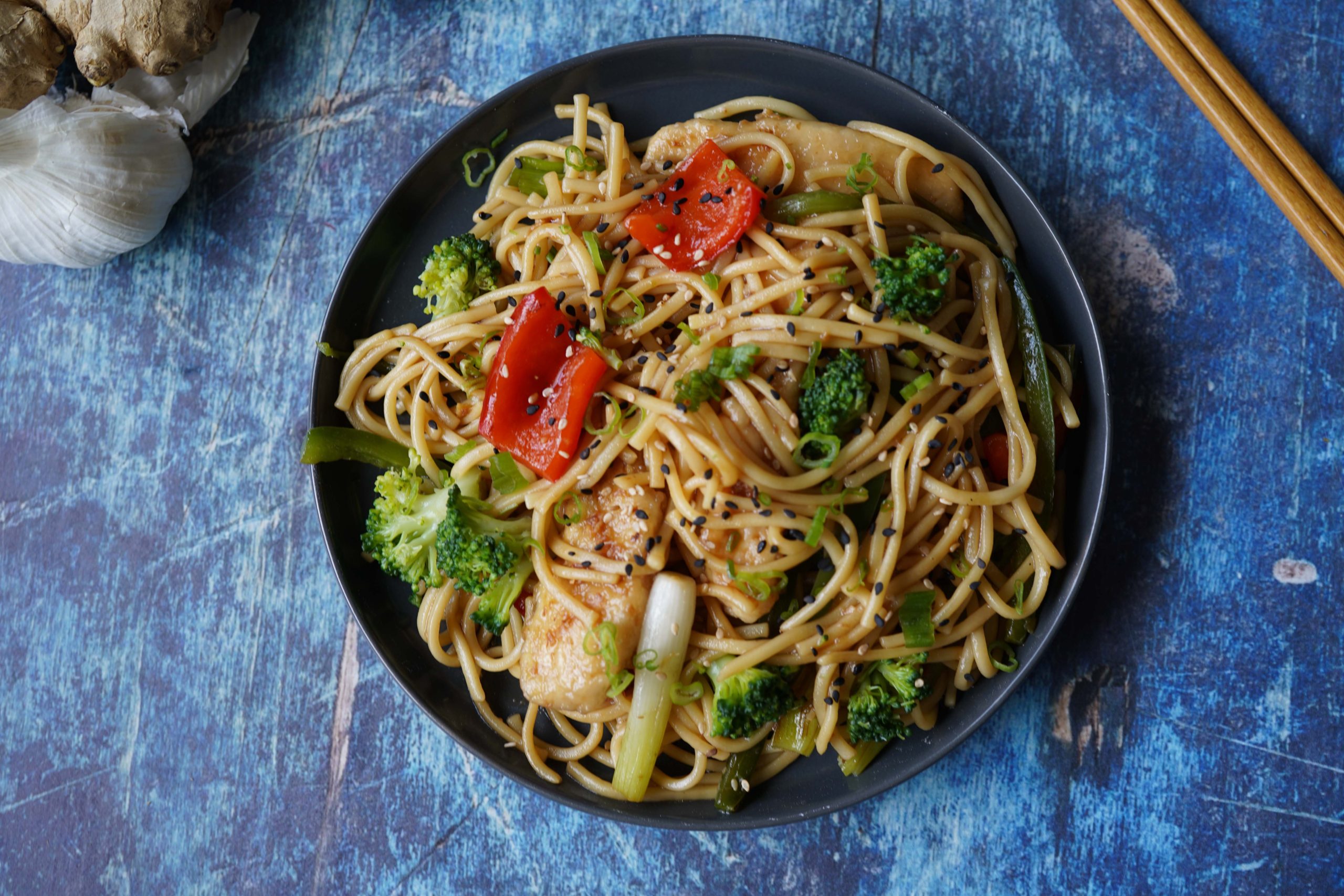Embark on a culinary journey to the heart of Peruvian cuisine with the tantalizing Peruvian Tallarin Verde con Bistec recipe. This beloved dish, steeped in cultural significance, invites you to savor a symphony of flavors and textures that will leave a lasting impression.
As you delve into the origins and evolution of this culinary masterpiece, you’ll discover the secrets behind its unique blend of ingredients and cooking techniques. From the vibrant green noodles to the tender, savory steak, each element plays a harmonious role in creating a dish that delights the senses.
Peruvian Tallarin Verde con Bistec: Peruvian Tallarin Verde Con Bistec Recipe
Tallarin Verde con Bistec is a beloved Peruvian dish that holds a special place in the country’s culinary landscape. This tantalizing combination of vibrant green noodles and tender beef steak has captured the hearts and palates of Peruvians for generations.
Cultural Significance
Tallarin Verde con Bistec is not merely a meal but an integral part of Peruvian culture. It is often served during special occasions and family gatherings, symbolizing celebration, togetherness, and the rich culinary heritage of the country. The dish’s popularity extends beyond Peru, with variations found in neighboring countries and among Peruvian communities worldwide.
Origin and Evolution
The origins of Tallarin Verde con Bistec can be traced back to the 19th century. Italian immigrants introduced pasta to Peru, which was then adapted and fused with local ingredients and flavors. The green color of the noodles is derived from spinach or basil, giving the dish its distinctive appearance. Over time, the dish has evolved to include various regional variations, each with its unique blend of spices and accompaniments.
Unique Flavors and Textures
Tallarin Verde con Bistec tantalizes the taste buds with its harmonious blend of flavors. The vibrant green noodles, infused with spinach or basil, provide a refreshing herbal note. The tender beef steak, marinated in a savory blend of spices, adds a rich and satisfying meaty flavor. The dish is often accompanied by a creamy and flavorful sauce, enhancing the overall taste experience.
The contrasting textures of the dish are equally captivating. The soft and springy noodles provide a delightful chew, while the tender beef steak melts in the mouth. The creamy sauce adds a smooth and velvety element, creating a symphony of textures that elevates the dining experience.
Ingredients

Peruvian Tallarin Verde con Bistec features a harmonious blend of ingredients that contribute to its distinct flavor and texture. Let’s explore each component and its role in this delectable dish:
Spinach: The vibrant green color of the noodles comes from fresh spinach, which adds a subtle earthy flavor and nutritional value to the dish.
Flour: All-purpose flour forms the base of the noodles, providing structure and elasticity. It allows the noodles to hold their shape while cooking.
Eggs: Eggs act as a binder, bringing the dough together and adding richness to the noodles.
Beef: Tenderloin or sirloin steak is sliced thin and marinated in a flavorful blend of spices. This protein component adds a savory dimension to the dish.
Onion: Sautéed onions provide a sweet and aromatic base for the sauce.
Garlic: Minced garlic adds a pungent and earthy flavor to the sauce.
Tomato paste: Concentrated tomato paste enhances the sauce’s umami and acidity, balancing the richness of the beef.
Red wine: A splash of red wine adds depth and complexity to the sauce.
Beef broth: Rich beef broth forms the liquid base of the sauce, providing a savory and flavorful foundation.
Variations and Substitutions
Variations and substitutions can be made to accommodate dietary preferences or availability of ingredients:
- Spinach: For a different color and flavor profile, use beet greens, Swiss chard, or kale instead of spinach.
- Flour: Gluten-free flour can be used for those with gluten intolerance.
- Beef: Chicken, pork, or tofu can be substituted for beef.
- Onion: Leeks or shallots can be used instead of onions.
- Garlic: Freshly minced garlic can be replaced with garlic powder.
- Red wine: White wine or dry sherry can be used instead of red wine.
- Beef broth: Vegetable broth or chicken broth can be used as an alternative to beef broth.
Preparation
Preparing Peruvian Tallarin Verde con Bistec is a delightful culinary experience that combines the vibrant flavors of Peruvian cuisine. Follow these detailed steps to create a tantalizing dish that will impress your taste buds:
Cooking the Noodles
Begin by bringing a large pot of salted water to a rolling boil. Gently add the tallarin noodles and cook according to the package instructions. Drain the noodles and set them aside.
Preparing the Sauce
In a large skillet, heat some olive oil over medium heat. Add the chopped onion and sauté until translucent. Stir in the minced garlic and cook for another minute.
Add the chopped cilantro, parsley, basil, and oregano to the skillet. Cook for 2 minutes, stirring frequently. Pour in the vegetable broth and bring to a simmer.
Dissolve the cornstarch in a small bowl of water. Gradually whisk the cornstarch mixture into the sauce and cook until it thickens. Season with salt and pepper to taste.
Cooking the Steak
Heat a grill or grill pan over high heat. Season the steak with salt and pepper. Grill the steak for 5-7 minutes per side, or until it reaches your desired doneness.
Assembling the Dish
To assemble the dish, place a bed of noodles on a plate. Top with the green sauce and grilled steak. Garnish with additional chopped herbs and serve immediately.
Cooking Techniques
The Peruvian Tallarin Verde con Bistec recipe employs various cooking techniques, each essential for achieving the dish’s distinct flavors and textures.
These techniques include sautéing, boiling, and stewing, each contributing to the dish’s overall appeal.
Sautéing
Sautéing is a cooking technique that involves cooking food in a shallow pan over medium-high heat with a small amount of fat, such as oil or butter.
In this recipe, sautéing is used to cook the onions, garlic, and tomatoes, which form the flavorful base of the dish.
The high heat quickly caramelizes the vegetables, enhancing their sweetness and depth of flavor.
- Heat a large skillet or sauté pan over medium-high heat.
- Add a tablespoon of olive oil and swirl to coat the pan.
- Add the chopped onions and cook until softened, about 5 minutes.
- Add the minced garlic and cook for 1 minute more.
- Add the chopped tomatoes and cook until softened and juicy, about 5 minutes.
Boiling
Boiling is a cooking technique that involves submerging food in boiling water until it is cooked through.
In this recipe, boiling is used to cook the tallarin noodles, which provide the dish with its starchy base.
Boiling the noodles in salted water helps to develop their flavor and texture.
- Bring a large pot of salted water to a boil.
- Add the tallarin noodles and cook according to the package directions, usually for about 10-12 minutes.
- Drain the noodles in a colander and rinse with cold water.
Stewing
Stewing is a cooking technique that involves simmering meat or vegetables in a flavorful liquid, such as broth or wine.
In this recipe, stewing is used to cook the beef, which is the main protein component of the dish.
The slow and gentle cooking process tenderizes the beef and infuses it with the flavors of the liquid.
- In a large Dutch oven or braising pan, brown the beef cubes in a little olive oil over medium-high heat.
- Add the chopped onions, carrots, and celery and cook until softened, about 5 minutes.
- Add the red wine, beef broth, and tomato paste and bring to a boil.
- Reduce heat to low, cover, and simmer for 1-2 hours, or until the beef is tender.
Presentation

The presentation of Peruvian Tallarin Verde con Bistec is crucial for enhancing its appeal and authenticity. By incorporating vibrant garnishes, flavorful sauces, and complementary side dishes, you can create a visually stunning dish that tantalizes the senses.
When plating, consider arranging the tallarin verde in a neat mound or spiral, creating a base for the tender bistec. Garnish the dish with a sprinkling of fresh cilantro, adding a pop of color and aromatic freshness. For an extra touch of elegance, drizzle a flavorful Huancaina sauce over the tallarin verde, adding a creamy and slightly spicy element.
Side Dishes
To complement the main dish, consider serving Peruvian Tallarin Verde con Bistec with a variety of side dishes that enhance its flavors and textures. A refreshing salad of mixed greens, tomatoes, onions, and a tangy dressing provides a light and vibrant accompaniment. Alternatively, serve the dish with a portion of steamed vegetables, such as broccoli, carrots, or green beans, offering a healthy and nutritious balance.
Nutritional Value
Peruvian Tallarin Verde con Bistec offers a balanced nutritional profile with a blend of carbohydrates, protein, and healthy fats.
This dish provides a significant amount of complex carbohydrates from the noodles, which provide sustained energy. The lean beef in the bistec is a rich source of protein, essential for muscle growth and repair. The vegetables add fiber, vitamins, and minerals to the meal.
Macronutrient Content
- Carbohydrates: 50-60% of total calories
- Protein: 25-30% of total calories
- Fat: 15-20% of total calories
Micronutrient Content, Peruvian tallarin verde con bistec recipe
- Vitamin C: From bell peppers and tomatoes
- Vitamin A: From carrots
- Iron: From beef and spinach
- Potassium: From potatoes
Healthier Options
To make this dish healthier, consider the following suggestions:
- Use whole-wheat noodles for added fiber.
- Choose leaner cuts of beef, such as flank or skirt steak.
- Increase the proportion of vegetables in the dish.
- Reduce the amount of oil used in cooking.
Closing Summary

In conclusion, the Peruvian Tallarin Verde con Bistec recipe is a testament to the culinary prowess of Peru. Its rich flavors, vibrant colors, and captivating textures make it a dish that will continue to enchant taste buds for generations to come. Whether enjoyed as a comforting home meal or celebrated as a special occasion delicacy, this culinary gem embodies the vibrant spirit of Peruvian cuisine.
Questions Often Asked
What is the significance of tallarin verde in Peruvian cuisine?
Tallarin verde, or green noodles, is a staple in Peruvian cuisine, representing the country’s rich agricultural heritage. The vibrant green color is derived from blending fresh spinach or basil into the dough, giving it a distinctive flavor and visual appeal.
What are the key ingredients in Peruvian Tallarin Verde con Bistec?
The dish features a harmonious blend of ingredients, including green noodles (tallarin verde), tenderized steak (bistec), flavorful onions, aromatic garlic, and a rich tomato-based sauce. Each ingredient contributes to the overall symphony of flavors and textures.
How can I make a healthier version of Peruvian Tallarin Verde con Bistec?
To make a healthier version of the dish, you can substitute leaner cuts of steak, such as flank steak or sirloin. Additionally, you can reduce the amount of oil used in cooking and opt for whole-wheat noodles to increase fiber intake.